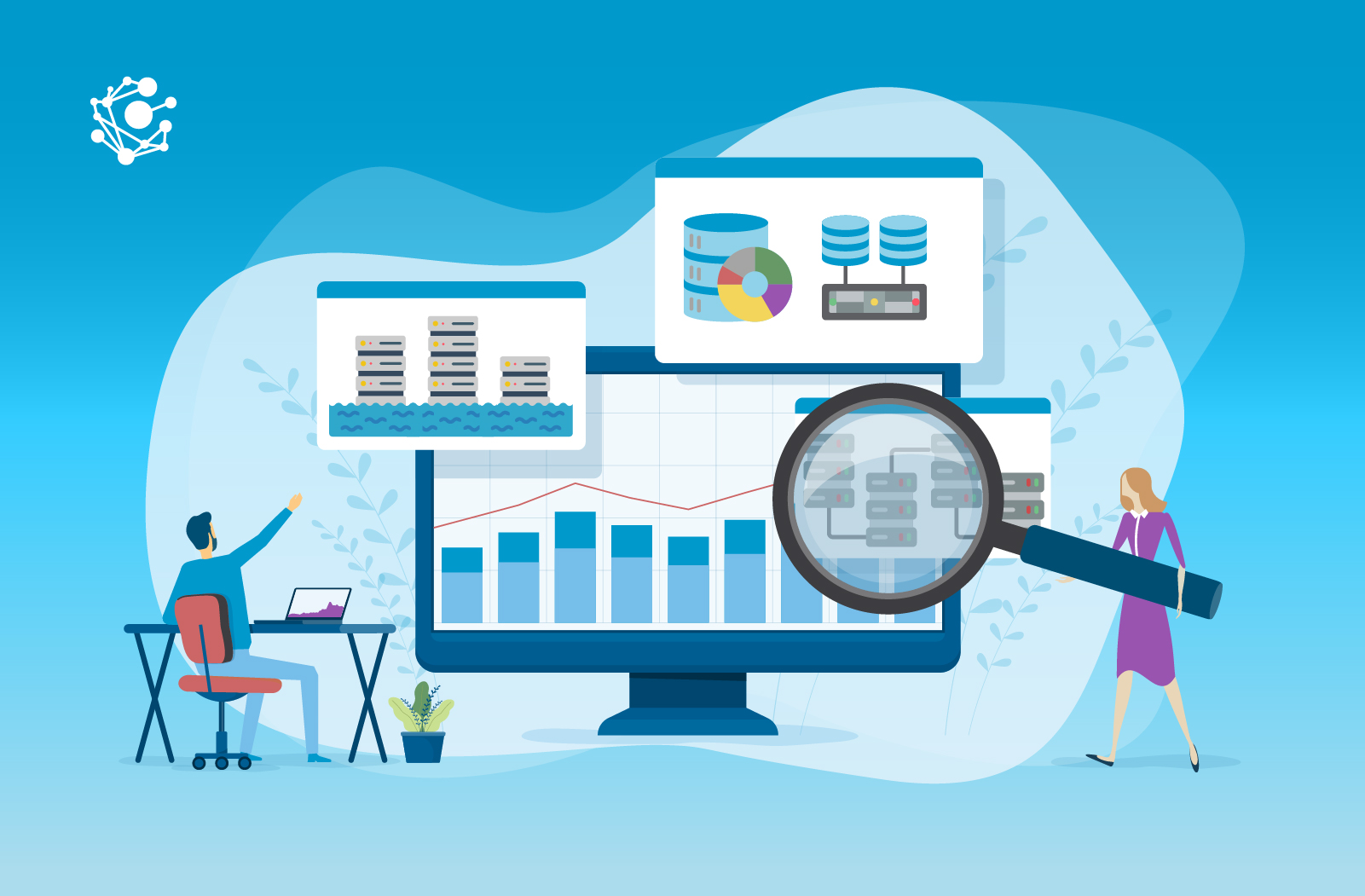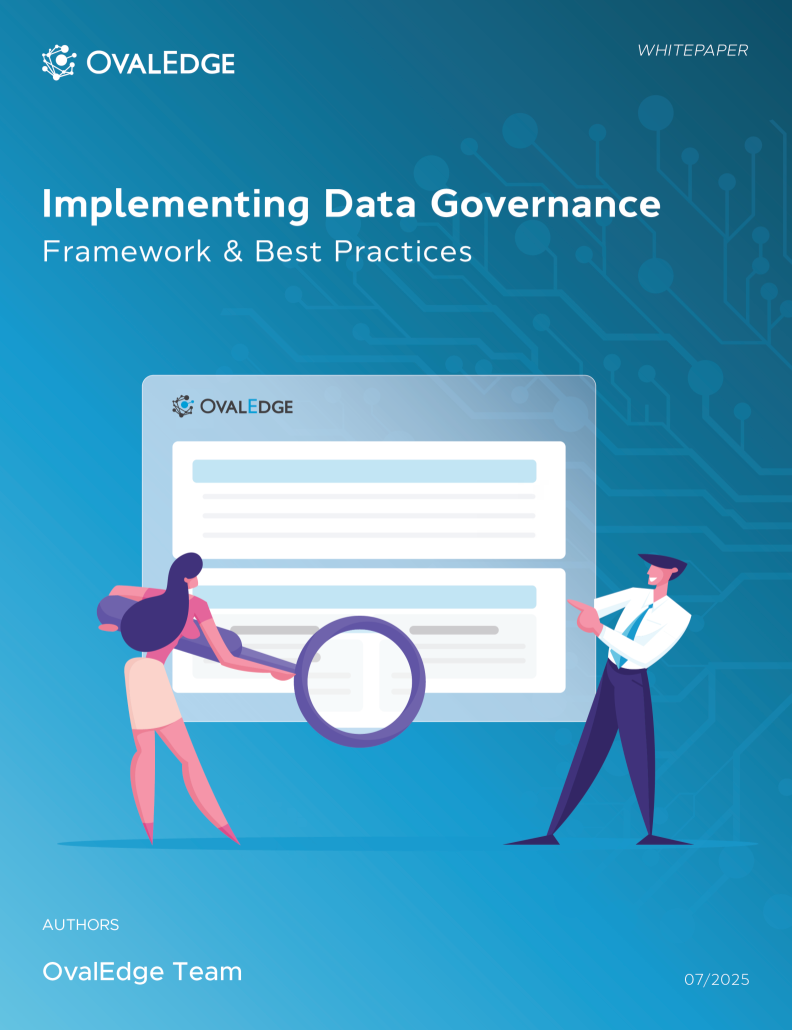Table of Contents
Data Discovery: What it is, Why it’s Important for Data Governance
An essential business intelligence (BI) process, effective data discovery provisions make an organization’s data easy to locate, regardless of where it’s stored. But before we look into the benefits of data discovery, let’s imagine a scenario where these important processes are ignored.
In today’s data-driven world, organizations are collecting massive amounts of information across systems, platforms, and departments. Yet, many still struggle to find, understand, and trust their data.
That’s where data discovery for data governance becomes essential, helping businesses locate, organize, and secure their data for better decision-making.
Before exploring its benefits, let’s look at what happens when data discovery is missing.
The Cost of Unorganized Data
In most organizations, data isn’t centrally located or uniformly accessible. Instead, it’s spread across different databases, cloud applications, and spreadsheets, often controlled by specific departments with limited visibility for others.
This lack of coordination creates major problems:
- Data is hard to find and even harder to verify.
- Teams spend hours searching or requesting access to files.
- Decision-making slows down because no one knows which version of the data is accurate.
Without a discovery system, retrieving a single dataset can take weeks or even months. But with a strong data discovery framework, that same information can be located and verified in minutes.
What is Data Discovery?
Data discovery is the process of identifying, cataloging, and understanding data across an organization. It’s a foundational part of data governance, enabling transparency, accessibility, and control over diverse and distributed data sources.
Through automation, a data discovery system scans all connected data environments, gathers metadata, and provides users with a unified, searchable catalog. It allows business users and IT teams to explore, trust, and use data confidently without depending on tribal knowledge.
A strong data discovery framework supports compliance, improves data quality, and ensures teams make decisions based on trusted, consistent information.
Adequate data discovery provisions should be an essential part of any organization’s data governance strategy.
Need help convincing stakeholders of the importance of data governance?Download our free Data Governance Business Case Builder
Why is Data Discovery Important for Business?
As we’ve already discussed, data discovery platforms make the process of finding, accessing, and collaborating on data more efficient, and this has several benefits to your business.
When integrated into your data governance strategy, data discovery doesn’t just make data accessible; it transforms how your organization operates. Here’s why it matters:
1. Faster Access to Trusted Data
Data discovery tools reduce manual effort. Instead of spending hours finding information, teams can search for keywords or business terms and get instant results similar to a Google-like experience within your data catalog.
2. Improved Efficiency and Productivity
With data readily available, data engineers and scientists can focus on analytics, model building, and insights, not data hunting. This shift directly improves productivity across departments.
3. Better Decision-Making
When teams access verified, high-quality data, decisions become faster and more accurate. Everyone in the organization works from the same trusted source of truth.
4. Stronger Compliance and Governance
Data discovery for data governance ensures compliance with data privacy regulations such as GDPR and CCPA. Sensitive data is identified, classified, and managed securely throughout its lifecycle.
What are the Benefits of Data Discovery?
A mature data discovery framework unlocks strategic advantages that go beyond accessibility. It helps businesses govern data efficiently while maintaining agility.
Here are the key benefits:
- Transparency: Know where your data resides, who owns it, and how it’s used.
- Collaboration: Empower teams across departments to share and reuse data confidently.
- Data Quality: Enforce standards for accuracy, completeness, and consistency.
- Security: Identify and manage personally identifiable information (PII) and other sensitive assets.
- Scalability: Support continuous data growth without losing control.
- Compliance Readiness: Maintain readiness for audits and evolving data privacy laws.
With these capabilities, businesses can transform fragmented data ecosystems into organized, discoverable, and trustworthy systems.
Data Discovery Use Case Scenario
Data discovery processes are used predominantly by data scientists and data engineers. With data discovery initiatives in place, these data professionals can build systems that will benefit other end users in an organization.
Without these processes, an organization’s data team can’t access existing information efficiently or work on it collaboratively.
Related: How Chief Data Officers overcome three key challenges they face
Making data searchable
Here’s a scenario. An employee in the accounts department needs a series of purchase orders and other historical financial data from the purchasing team.
They aren’t clear on the exact information they need, but want to build up an idea of how and why the purchasing budget has fluctuated over the previous decade.
There is a lot of back and forth between the two departments, and information that should be accessed easily takes months to find and process. That’s because without a collaborative, searchable data catalog it’s very hard for the accounts team to specify what they are looking for and for the purchasing team to find it.
How to implement Data Discovery with the right tools?
Businesses that wish to implement data discovery effectively face two key challenges.
Firstly, implementing a Google-like search facility when creating a data discovery platform is extremely difficult. It might be easy for the developer of a search engine to create a search function like this because all the information they require is publicly available and, importantly, in one place.
In this scenario, there is no need to worry about data security or personally identifiable information (PII).
But when it comes to replicating this in a business context, there are some serious stumbling blocks. You can’t simply put all of an organization’s data in one place because some of it could well be confidential.
Secondly, inputting vast amounts of data that exists in multiple channels into one platform requires a massive amount of infrastructure.
Updating a centralized platform with data in real time because new data is constantly being processed and acquired, is technically difficult and expensive.
These two factors make it challenging, if not impossible, for companies to create independent data discovery platforms.
Related: Data Catalog: The Ultimate Guide
How to Implement Data Discovery: Proven Methods
Implementing an effective discovery process requires the right data discovery methods supported by governance-driven technology. Here’s how organizations can make it happen:
1. Automated Data Scanning
Automatically detect and connect to databases, warehouses, and data lakes to map available assets.
2. Metadata Cataloging
Create a unified catalog that stores contextual information like schema, format, and owner for every dataset.
3. Data Classification
Use AI and pattern recognition to identify and tag PII or confidential data, ensuring compliance with privacy regulations.
4. Lineage Tracking
Visualize data flow from source to dashboard. Understand transformations, dependencies, and potential risk points.
5. Access Control and Policies
Define who can view, edit, or share datasets. Maintain security without restricting productivity.
These data discovery methods form the backbone of modern governance, ensuring visibility, trust, and compliance across all data systems.
Challenges in Data Discovery
Despite its importance, implementing data discovery can be complex. The main challenges include:
- Security Restrictions
Organizations must protect sensitive or private data while still making it discoverable. Centralizing everything in one place can create risks if not managed properly. - Infrastructure Complexity
Updating and synchronizing data across multiple systems in real time requires automation and scalable architecture, both of which demand careful planning.
Because of these hurdles, many organizations partner with specialized solutions like OvalEdge to streamline discovery and integrate governance from day one.
The OvalEdge Solution: Practical, Scalable Discovery
OvalEdge simplifies the path to efficient data discovery through automation, AI, and governance-first design.
Here’s how it helps:
- Smart PII Detection: Automatically identifies sensitive information and masks it from unauthorized access.
- Metadata-Driven Approach: Tracks metadata instead of raw data, minimizing storage and infrastructure costs.
- Continuous Crawling: Keeps data catalog entries updated in real time.
- Business-Friendly Interface: Empowers both technical and non-technical users with easy, search-based access.
- Collaboration & Knowledge Sharing: Encourages cross-departmental discovery and reuse of valuable data.
- Scalable Integration: Works seamlessly with Azure, Databricks, Snowflake, and other enterprise platforms.
See how OvalEdge streamlines data discovery.
Learn more about our easy-to-use discovery platform and data governance suite.
By combining advanced AI and strong governance principles, OvalEdge makes enterprise-scale data discovery both secure and practical.
FAQs on Data Discovery and Governance
- What is data discovery in data governance?
It’s the process of identifying, cataloging, and classifying data across systems to make it accessible, trustworthy, and compliant under a unified governance framework.
- What are common data discovery methods?
Core data discovery methods include automated data scanning, metadata cataloging, classification, lineage tracking, and policy-based access management.
- How does OvalEdge support data discovery for data governance?
OvalEdge automates scanning, lineage, and metadata management while enforcing governance policies, ensuring accurate, compliant, and discoverable data across your ecosystem.
Conclusion
Data discovery isn’t just a technical capability; it's the foundation of modern data governance.
With a structured data discovery framework, businesses gain the visibility and control needed to make informed, compliant decisions.
OvalEdge brings this vision to life by automating discovery, protecting sensitive data, and empowering teams to collaborate effectively. The result? Faster analytics, better compliance, and complete trust in your data.
With our end-to-end data governance suite, you can quickly create a searchable data catalog where data engineers and scientists can access and collaborate on information efficiently.
Learn more about our easy-to-use discovery platform and data governance suite. Get in touch today and find out how OvalEdge can streamline your data governance strategy.
What you should do now
|
OvalEdge recognized as a leader in data governance solutions
.png?width=1081&height=173&name=Forrester%201%20(1).png)
“Reference customers have repeatedly mentioned the great customer service they receive along with the support for their custom requirements, facilitating time to value. OvalEdge fits well with organizations prioritizing business user empowerment within their data governance strategy.”
.png?width=1081&height=241&name=KC%20-%20Logo%201%20(1).png)
“Reference customers have repeatedly mentioned the great customer service they receive along with the support for their custom requirements, facilitating time to value. OvalEdge fits well with organizations prioritizing business user empowerment within their data governance strategy.”
Gartner, Magic Quadrant for Data and Analytics Governance Platforms, January 2025
Gartner does not endorse any vendor, product or service depicted in its research publications, and does not advise technology users to select only those vendors with the highest ratings or other designation. Gartner research publications consist of the opinions of Gartner’s research organization and should not be construed as statements of fact. Gartner disclaims all warranties, expressed or implied, with respect to this research, including any warranties of merchantability or fitness for a particular purpose.
GARTNER and MAGIC QUADRANT are registered trademarks of Gartner, Inc. and/or its affiliates in the U.S. and internationally and are used herein with permission. All rights reserved.



.webp)


